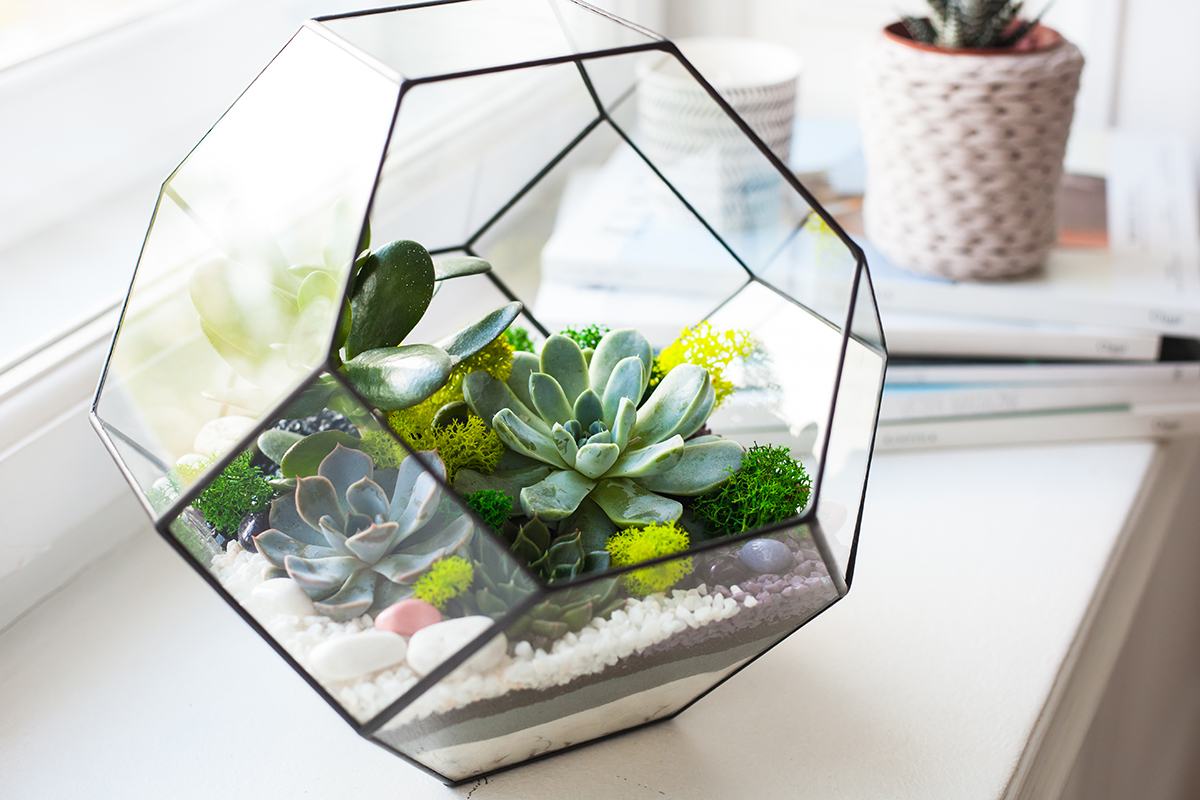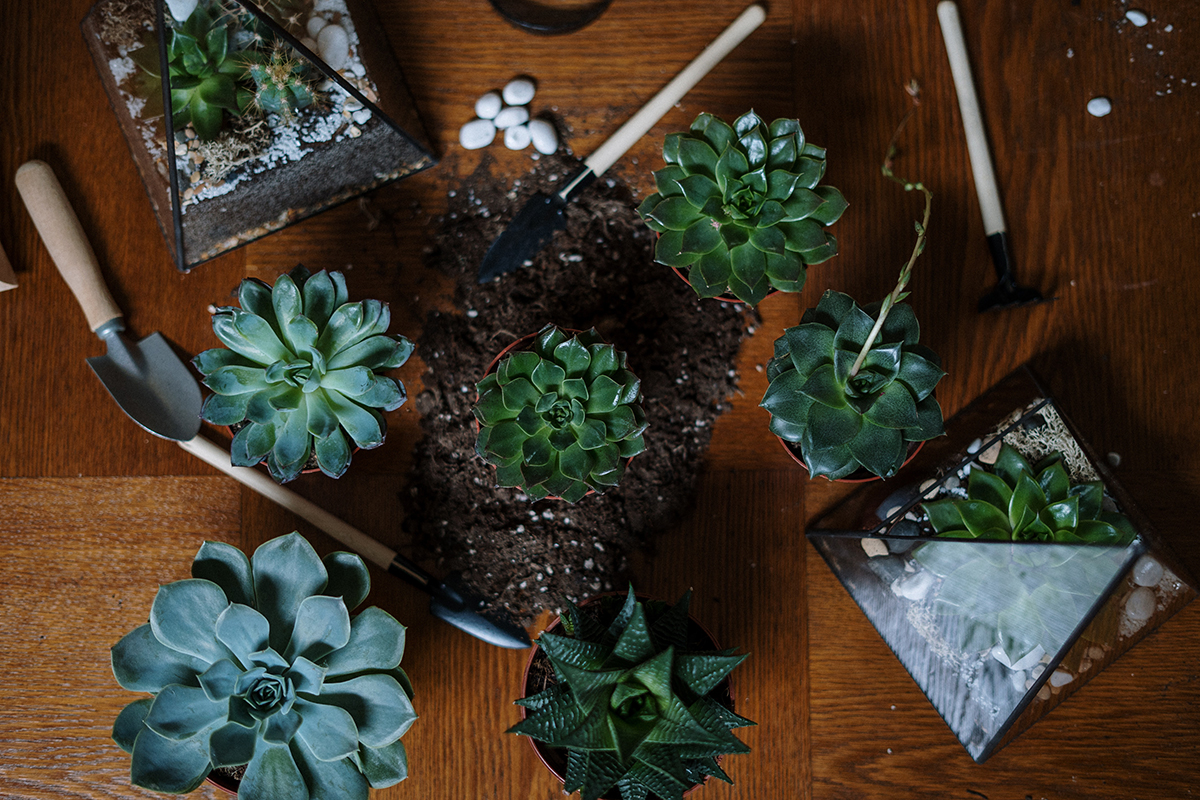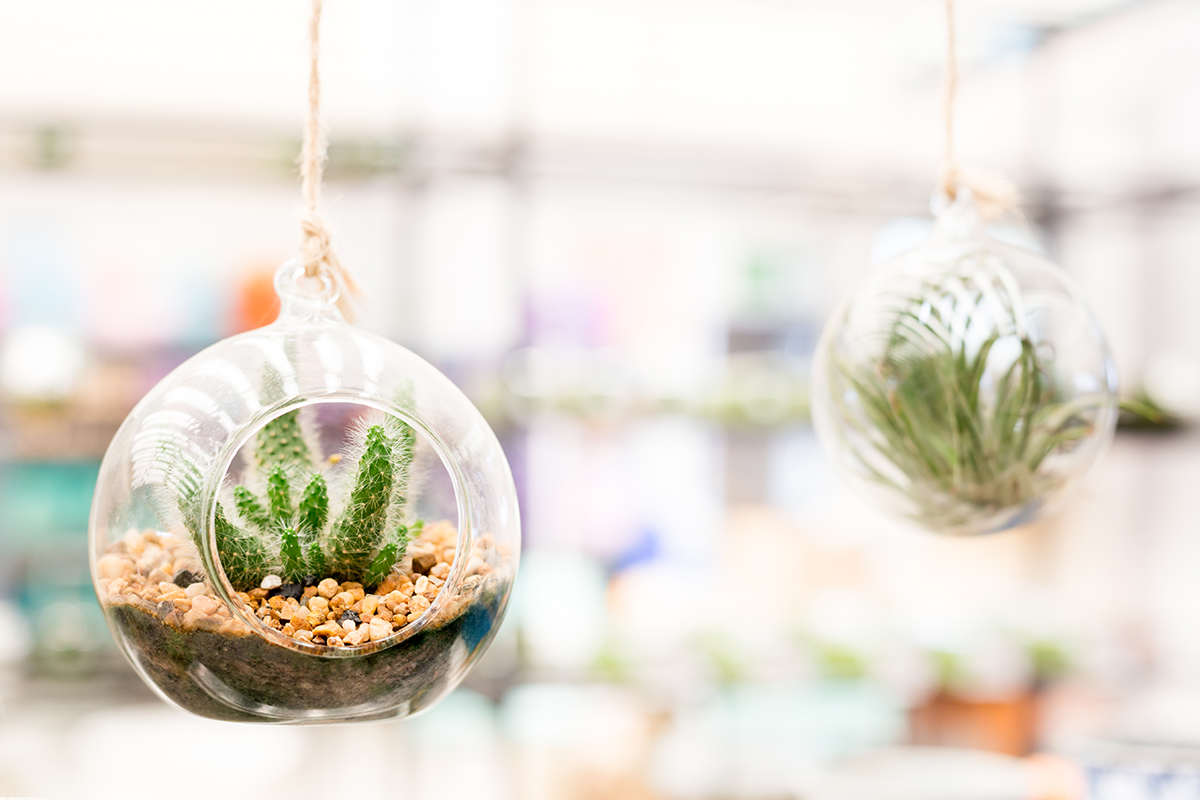Succulent terrariums are a trendy and low-maintenance way to bring the beauty of plants into your home. These self-contained ecosystems are perfect for busy individuals or for those who may not have a green thumb, as succulents and cacti are known for their ability to thrive in dry conditions.
In this blog post, we’ll provide a beginner’s guide to creating a succulent terrarium. From choosing the right container and materials, to planting and arranging your succulents, we’ll cover all the essential steps for creating a beautiful and healthy plant oasis. We’ll also provide tips for caring for your terrarium and troubleshooting common problems, as well as offer some design inspiration to help you get started. So, let’s dive in and learn more about creating the perfect succulent terrarium!
Choosing the Right Container and Materials
One of the first steps in creating a succulent terrarium is choosing the right container and materials. Glass containers with a lid, such as fish tanks or jar, are a popular choice for terrariums because they allow for proper airflow and provide a clear view of your plants.
In addition to a glass container, you’ll also need a layer of drainage material at the bottom of your terrarium, such as pebbles or gravel. This helps to prevent excess water from accumulating and helps to keep your plants healthy.
You’ll also need soil and plants, of course! When choosing soil for your succulent terrarium, it’s important to use a well-draining mix that won’t hold too much moisture. Cactus and succulent soil mixes are a good choice, or you can create your own by mixing equal parts potting soil, perlite, and sand.
Finally, you may also want to consider adding decorative elements, such as rocks or figurines, to your terrarium. Just be sure to choose items that won’t impact the health and well-being of your plants.
Creating the Perfect Soil Mix
Once you have your container and materials ready, the next step in creating a succulent terrarium is preparing the soil mix. As mentioned previously, it’s important to use a well-draining soil mix that won’t hold too much moisture. This is especially important for succulents and cacti, which are prone to rot in soil that is too wet.
To create a well-draining soil mix, you can use a pre-made cactus and succulent soil mix, or create your own by mixing equal parts potting soil, perlite, and sand. You can also add in a small amount of compost or organic matter to provide additional nutrients for your plants.
When preparing your soil mix, be sure to moisten it slightly before adding it to your terrarium. This will help to ensure that the soil is evenly distributed and easy to work with. You can then add a layer of soil to the bottom of your terrarium, making sure to leave enough room for your plants and any other decorative elements.
Planting and Arranging Your Succulents
Once you have your soil mix prepared, it’s time to start planting and arranging your succulents in your terrarium. When choosing your plants, be sure to select species that have similar light and moisture requirements to ensure that they can thrive together in your terrarium. It’s also a good idea to choose a mix of small, medium, and large plants to create visual interest and balance in your terrarium.
To plant your succulents, simply dig a small hole in the soil and gently place the plant in the hole, making sure to gently firm the soil around the roots. You can then add additional plants and decorative elements, such as rocks or figurines, as desired.
When arranging your plants and decorative elements, consider the overall look and feel that you want to create. Do you want a formal, structured look, or a more organic, natural feel? The choice is up to you! Just be sure to leave enough space between your plants to allow for proper growth and airflow.
Caring for Your Succulent Terrarium
Caring for your succulent terrarium is relatively easy, as moss, succulents and cacti are known for their low-maintenance requirements. However, there are a few key things to keep in mind to ensure that your terrarium stays healthy and thriving.
One of the most important aspects of caring for a succulent terrarium is watering. Succulents and cacti require much less water than other types of plants, and it’s important not to overwater them. In general, it’s best to allow the soil to dry out completely before watering again, and to water thoroughly but infrequently. A good rule of thumb is to water your terrarium plants once every 1-2 weeks, depending on the size and type of plants you have chosen.
In addition to watering, it’s also important to provide your plants with the right amount of light. Succulents and cacti prefer bright, indirect light, so a sunny windowsill is a good location for your terrarium. Avoid placing your terrarium in direct sunlight, as this can lead to overheating and plant damage.
Finally, be sure to monitor your plants for any signs of pests or diseases, and address any issues promptly to keep your terrarium healthy. With proper care, your succulent terrarium should thrive for years to come.
Troubleshooting Common Problems
Despite their low-maintenance requirements, there are a few common issues that can arise when caring for a succulent terrarium. Here are a few common problems and how to troubleshoot them:
- Overwatering: One of the most common mistakes when caring for a succulent terrarium is overwatering. To prevent overwatering, allow the soil to dry out completely between waterings, and water thoroughly but infrequently. If you notice that your plants are wilting or turning yellow, it may be a sign of overwatering.
- Underwatering: On the other hand, it’s also possible to underwater your terrarium plants. If you notice that your plants are shriveling or becoming withered, it may be a sign that they are not getting enough water. In this case, increase the frequency of your waterings slightly, being sure to water thoroughly to ensure that the soil is evenly moistened.
- Pest infestations: Pests, such as aphids or mealybugs, can occasionally be a problem in succulent terrariums. If you notice any pests on your plants, use a mild, organic pest control solution to eliminate them.
- Poor lighting: Another common issue with succulent terrariums is poor lighting.
Design Inspiration: 10 Beautiful Succulent Terrarium Ideas
Are you looking for some design inspiration for your succulent terrarium? Here are 10 beautiful ideas to get you started:
- “Desert Oasis”: Create a desert-inspired terrarium using a mix of cacti, succulents, and rocks.
- “Tropical Escape”: Bring a touch of the tropics to your home with a terrarium featuring tropical plants, such as ferns and bromeliads.
- “Fairy Garden”: Transform your terrarium into a miniature enchanted world with a fairy garden theme, complete with tiny houses and accessories.
- “Sensory Experience”: Add a textural element to your terrarium with a sensory theme, using elements like pebbles, shells, and rocks.
- “Herb Garden”: Grow your own fresh herbs in a terrarium, such as basil, parsley, and mint.
- “Terrarium Terrarium”: Use a fish tank or aquarium as a terrarium base for a larger, more immersive experience.
- “Boho Chic”: Create a bohemian-inspired terrarium with a mix of colorful succulents and other plants, as well as decorative elements like macrame hangings and crystals.
- “Minimalist Modern”: Keep things simple and sleek with a minimalist modern hanging terrarium featuring clean lines and a limited color palette.
- “Jungle Paradise”: Bring the jungle to your home with a terrarium featuring lush, tropical plants like ferns and philodendrons.




